SDN Based End-to-End Inter-Domain Routing Mechanism for Mobility Management and Its Evaluation
Abstract
1. Introduction
2. Related Works
2.1. SDN Based Mobility Management
2.2. Routing Approach in SDN Networks
3. End-to-End Routing Mechanism for Mobility Management
3.1. Overview and Design
- The number of domains each route candidate goes through (number of hops)
- The number of flow operations for each route candidate
- Real-time bandwidth usage information
3.2. Example of Routing
4. Implementation
- Management Information Sharing Function (MISF)
- -
- Figure 7 shows a sequence diagram of MISF. When an MN makes an inter-domain move, the SDN controller of the destination domain detects the connection of the MN within the destination domain (attachment of the MN). The SDN controller detects the attachment of the MN with the packets sent from the MN which the SDN controller of the destination domain does not have information of the MN such as MAC address and IP address. Then, the SDN controller of the destination domain searches for the MN’s source domain by asking from the destination domain’s neighboring domains whether a node with the MN’s MAC address belonged to them. If there was, the SDN controller of the source domain replies the IP address the MN was using in the source domain. After discovering the source domain, the SDN controller of the destination domain informs a node connection information, that is a set of the MN’s MAC address, the IP address the MN was using in source domain (former IP address), the IP address the MN is using in destination domain (current IP address) to the SDN controller of the domain the CN belongs to. The SDN controller obtains the information of the domain the CN belongs to from the packets sent from the MN to the CN.
- Inter Domain Routing Function (IDRF)
- -
- Figure 8 shows a sequence diagram of IDRF. The SDN controller of the destination domain does all the calculation and the queuing. This function selects a new route using the routing mechanism we described above. Then, it informs the SDN controllers of the domains the new route goes through a bundle of information needed for establishing the new route; the MN’s MAC address, current IP address, former IP address, the CN’s MAC address and IP address. The SDN controllers that received them generate and install appropriate flow entries into SDN switches. In addition, in the domain which the CN belongs to, this function generates flow entries that rewrites destination IP addresses and source IP addresses of the packets sent between the MN and the CN and installs them in the SDN switch the CN is connected to. The rewriting of IP addresses is based on the node connection information that it received in the MISF. SDN switches do this rewriting processes. This allows the MN and the CN to continue their communication by keeping TCP connection.
5. Evaluation
5.1. Overview
- An MN, that is communicating with a CN moves to its neighboring SDN domain.
- Select a new route and set flow entries.
- After changing route, send 1000 MB data from the MN to the CN and measure the transfer time.
- Then, send 50 pings from the MN to the CN and measure the average RTT.
5.2. Experiment 1: Comparison with Legacy Approaches
5.3. Experiment 2: Effects of Weights
5.4. Discussion
6. Conclusions
Author Contributions
Conflicts of Interest
References
- Giusto, D.; Iera, A.; Morabito, G.; Atzori, L. (Eds.) The Internet of Things; Springer: Berlin, Germany, 2010. [Google Scholar]
- Gubbi, J.; Buyya, R.; Marusic, S.; Palaniswami, M. Internet of things (IoT): A vision, architectural elements, and future directions. Future Gener. Comput. Syst. 2013, 29, 1645–1660. [Google Scholar] [CrossRef]
- IEEE P802.11—TASK GROUP AI—MEETING UPDATE. Available online: http://www.ieee802.org/11/Reports/tgai_update.htm (accessed on 12 October 2018).
- Perkins, C.E. RFC 5944—IP Mobility Support for IPv4. 2010. Available online: https://tools.ietf.org/html/rfc5944 (accessed on 12 October 2018).
- Perkins, C.E.; Johnson, D.B.; Arkko, J. RFC 6275—Mobility Support for IPv6. 2011. Available online: https://tools.ietf.org/html/rfc6275 (accessed on 12 October 2018).
- Gundavelli, S.; Leung, K.; Devarapalli, V.; Chowdhury, K.; Patil, B. RFC 5213—Proxy Mobile IPv6. 2008. Available online: https://tools.ietf.org/html/rfc5213 (accessed on 12 October 2018).
- Wang, Y.; Bi, J. A solution for IP mobility support in software defined networks. In Proceedings of the 23rd International Conference on Computer Communication and Networks, Shanghai, China, 4–7 August 2014; pp. 1–8. [Google Scholar]
- Wang, Y.; Bi, J.; Zhang, K. Design and implementation of a software-defined mobility architecture for IP networks. Mob. Netw. Appl. 2015, 20, 40–52. [Google Scholar] [CrossRef]
- Hata, M.; Soylu, M.; Izumi, S.; Abe, T.; Suganuma, T. A Design of SDN Based IP Mobility Management Considering Inter-Domain Handovers and Its Evaluation. Adv. Sci. Technol. Eng. Syst. J. 2017, 2, 922–931. [Google Scholar] [CrossRef]
- Hata, M.; Soylu, M.; Izumi, S.; Abe, T.; Suganuma, T. SDN Based End-to-end Inter-domain Routing Mechanism for Mobility Management and Its Implementation. IEICE Tech. Rep. 2017, 117, 71–76. [Google Scholar]
- Idri, M. Mobility management based SDN-IPv6 Routing Header. In Proceedings of the 4th International Conference on Software Defined Systems (SDS2017), Valencia, Spain, 8–11 May 2017; pp. 150–155. [Google Scholar]
- Shrivastava, P.; Kataoka, K. FastSplit: Fast and Dynamic IP Mobility Management in SDN. In Proceedings of the 26th International Telecommunication Networks and Applications Conference (ITNAC2016), Dunedin, New Zealand, 7–9 December 2016; pp. 166–172. [Google Scholar]
- Astaneh, S.A.; Heydari, S.S. Optimization of SDN Flow Operations in Multi-Failure Restoration Scenarios. IEEE Trans. Netw. Serv. Manag. 2016, 13, 421–432. [Google Scholar] [CrossRef]
- Duan, Q. Network-as-a-Service in Software-Defined Networks for End-to-End QoS Provisioning. In Proceedings of the 23rd IEEE Wireless and Optical Communication Conference (WOCC 2014), Newark, NJ, USA, 9–10 May 2014; pp. 1–5. [Google Scholar]
- Phemius, K.; Bouet, M.; Leguay, J. DISCO: Distributed Muti-Domain SDN Controller. In Proceedings of the 2014 IEEE Network Operation and Management Symposium (NOMS2014), Krakow, Poland, 5–9 May 2014; pp. 1–4. [Google Scholar]
- Figueira, N.; Krishnan, R.R. SDN Multi-Domain Orchestration and Control: Challenges and Innovative Future Directions. In Proceedings of the 2015 International Conference on Computing, Networking, and Communications (ICNC2015), Garden Grove, CA, USA, 16–19 February 2015; pp. 406–412. [Google Scholar]
- The OpenDaylight Platform. Available online: https://www.opendaylight.org/ (accessed on 12 October 2018).
- Open vSwitch. Available online: http://openvswitch.org/ (accessed on 12 October 2018).
- McKeown, N.; Anderson, T.; Balakrishnan, H.; Parulkar, G.; Peterson, L.; Rexford, J.; Shenker, S.; Turner, J. OpenFlow: Enabling Innovation in Campus Networks. SIGCOMM Comput. Commun. Rev. 2008, 38, 69–74. [Google Scholar] [CrossRef]
- Gouda, M.G.; Schneider, M. Maximizable routing metrics. IEEE/ACM Trans. Netw. 2003, 11, 663–675. [Google Scholar] [CrossRef]
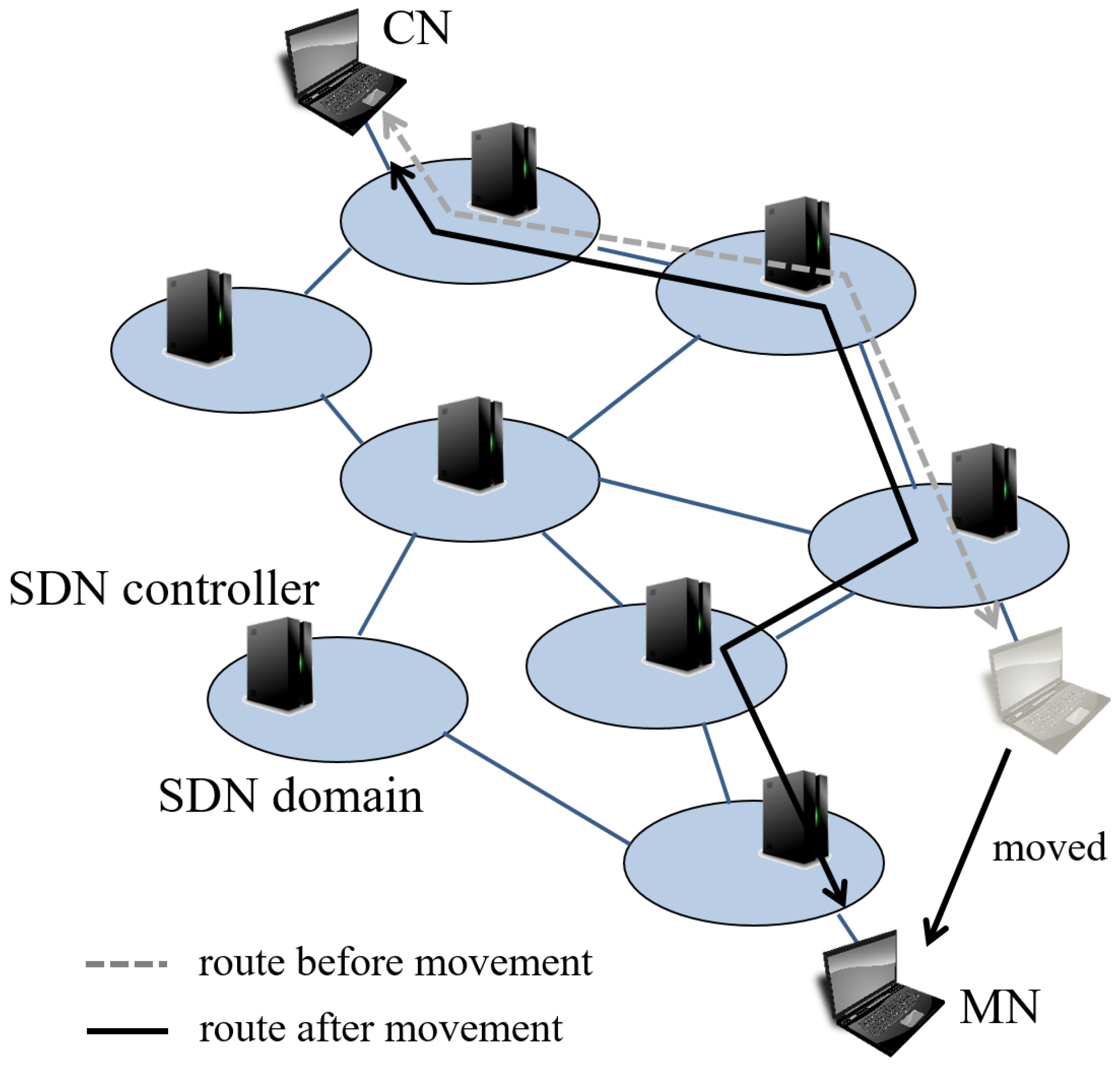
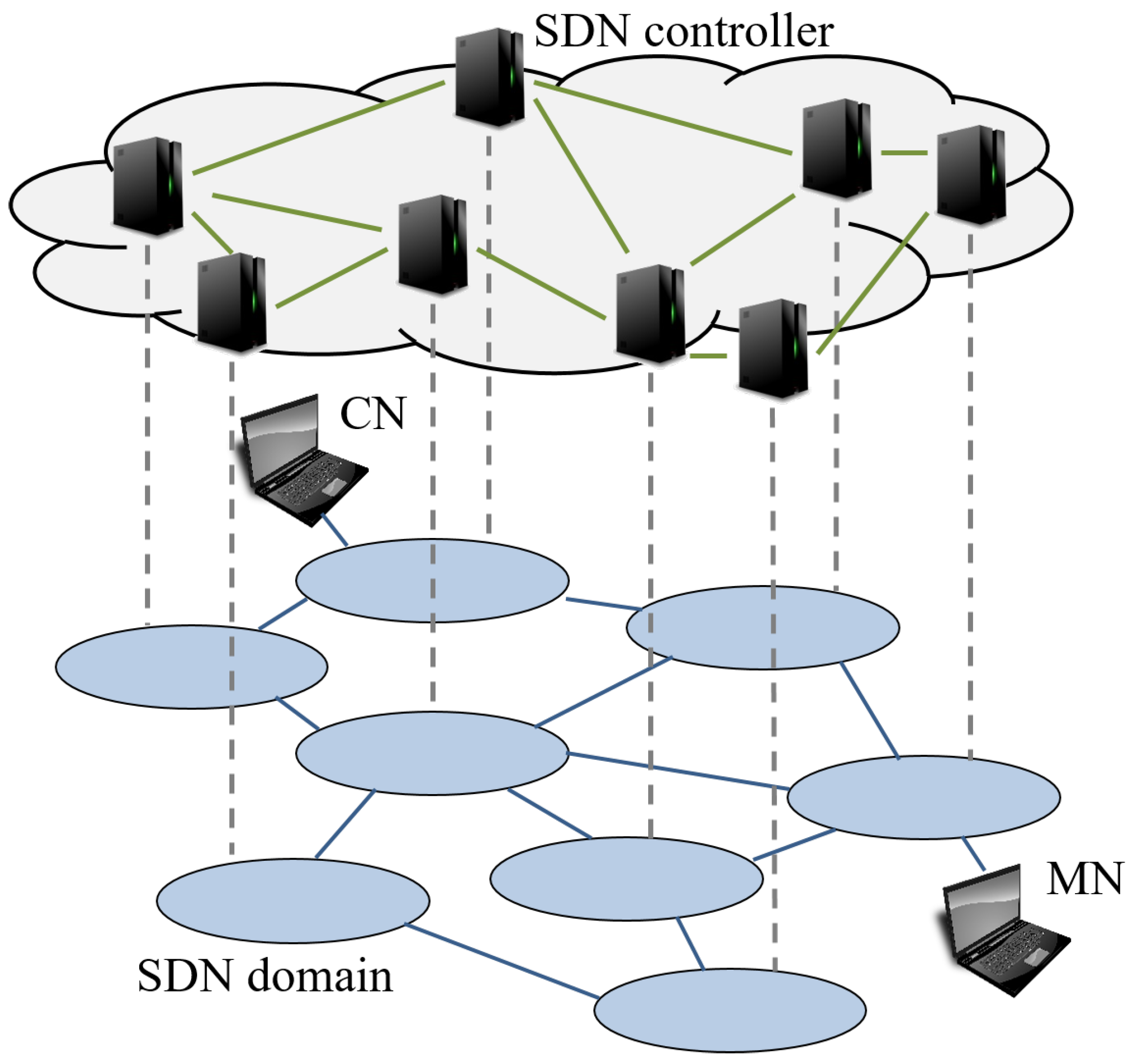
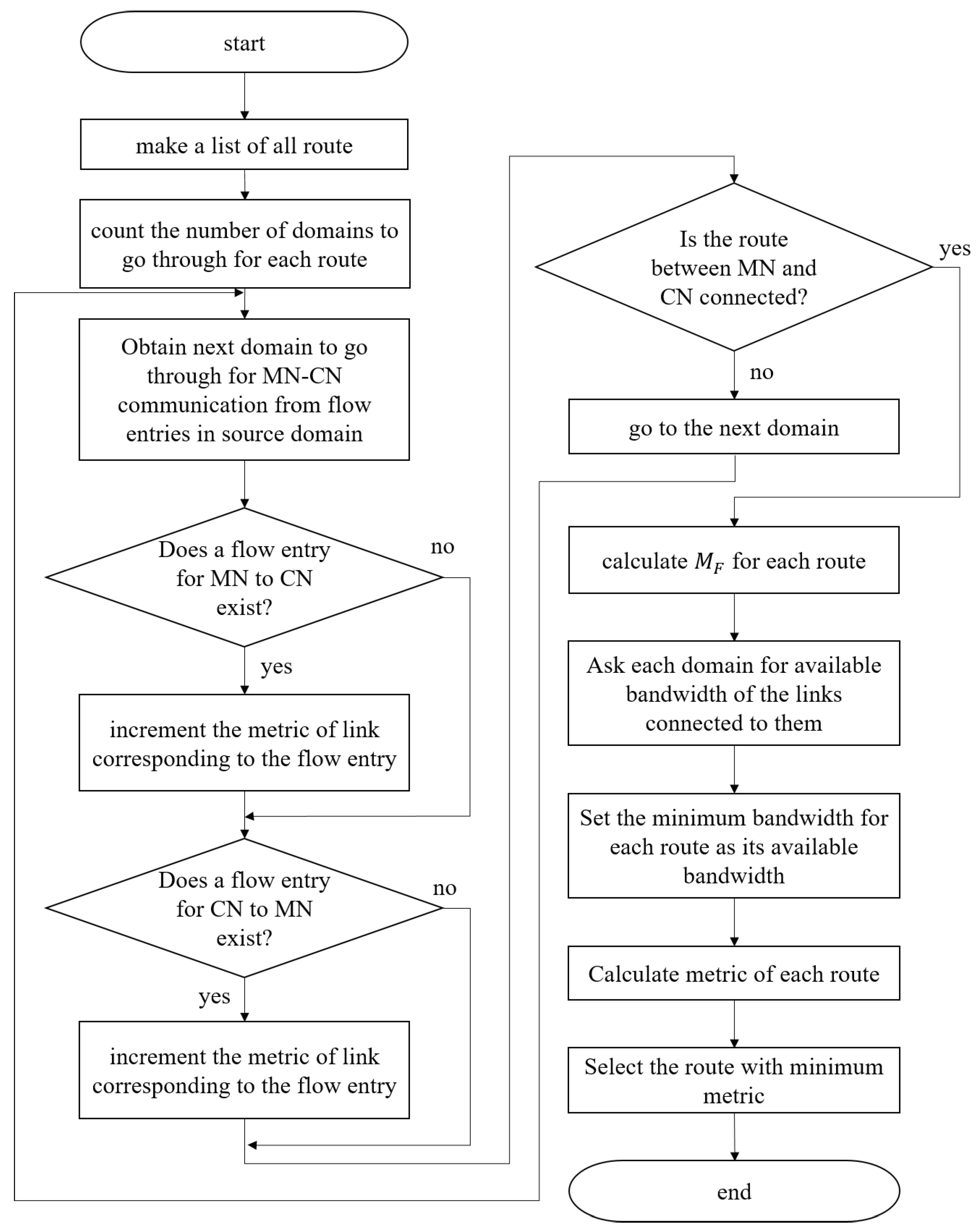
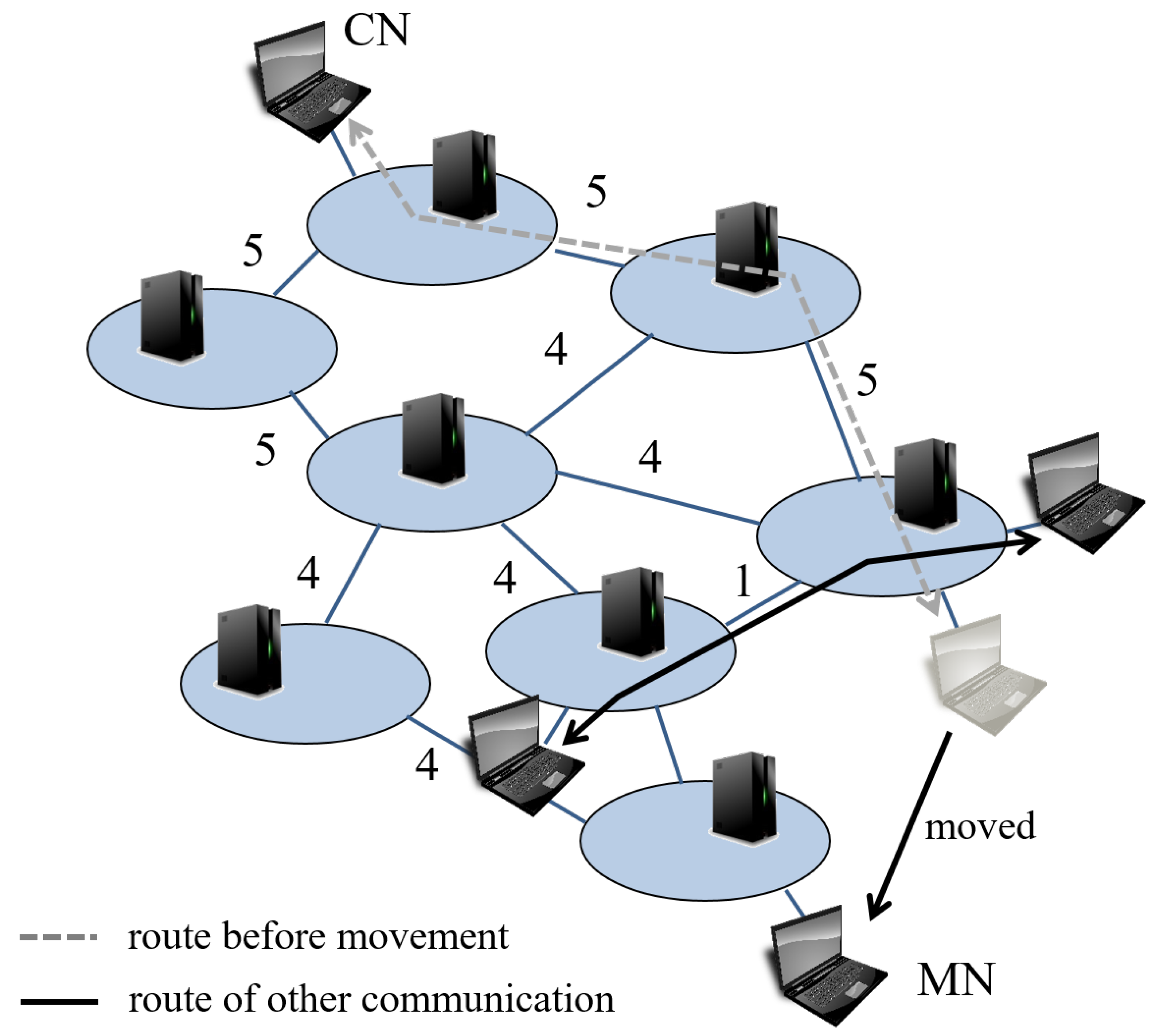
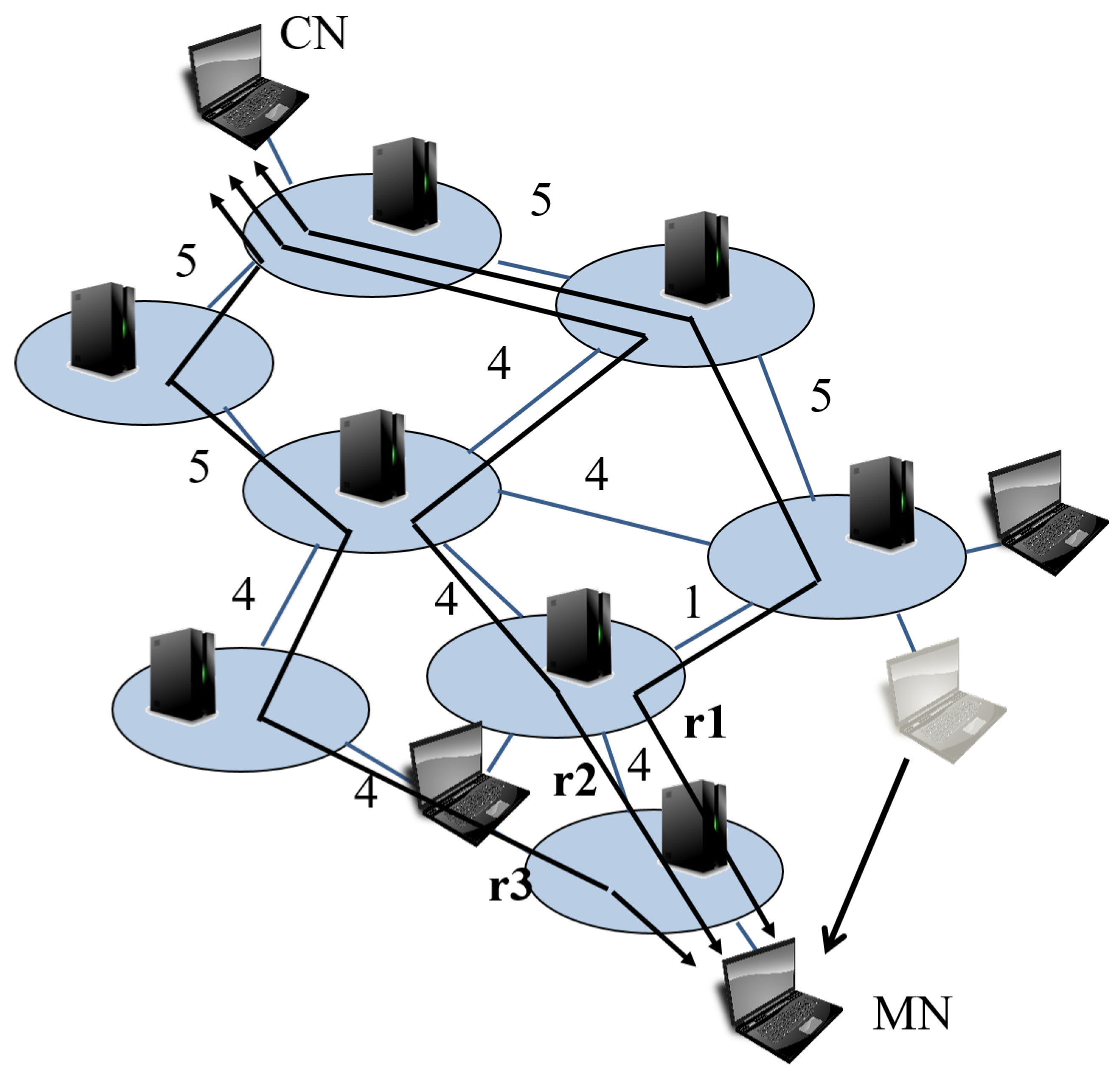
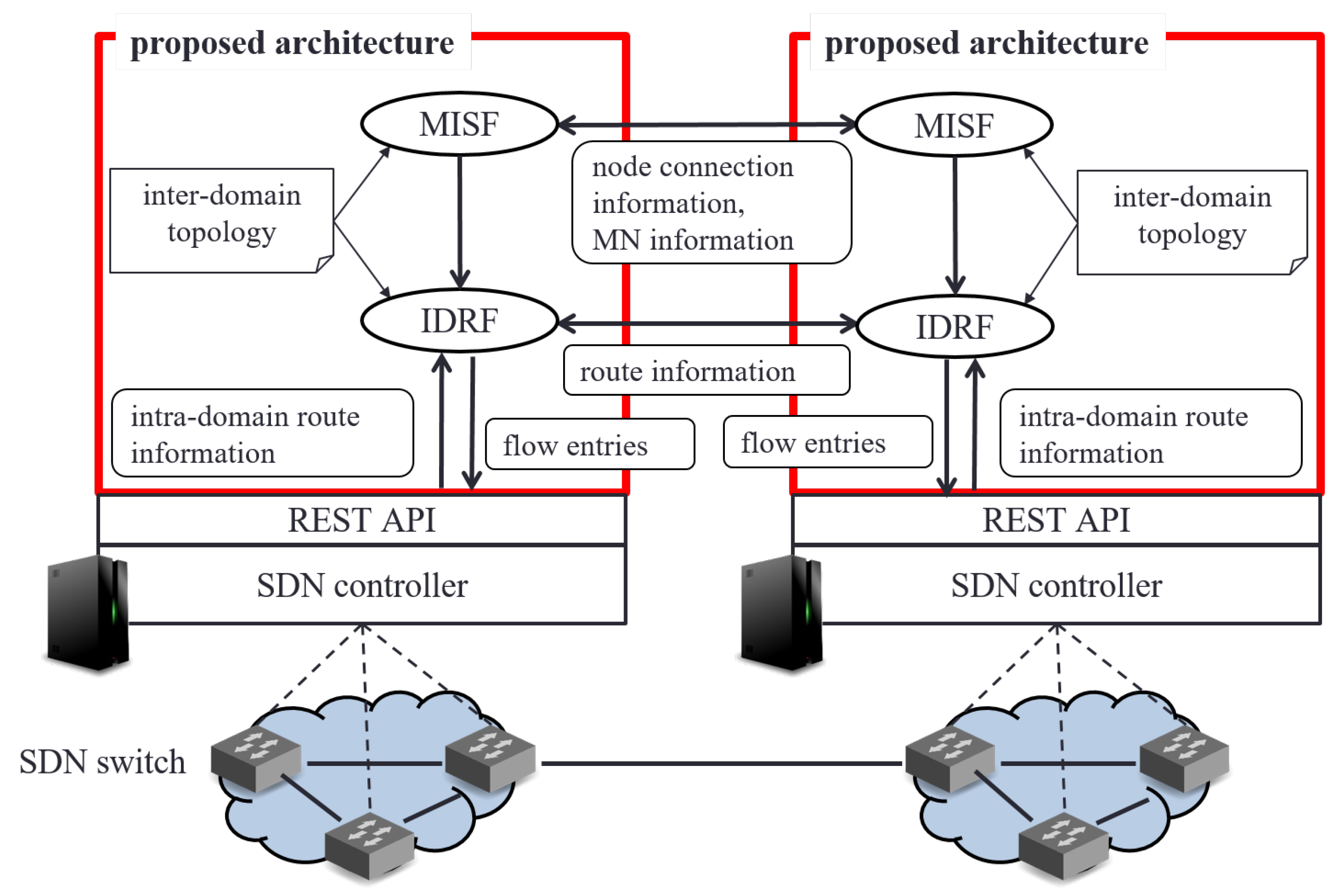
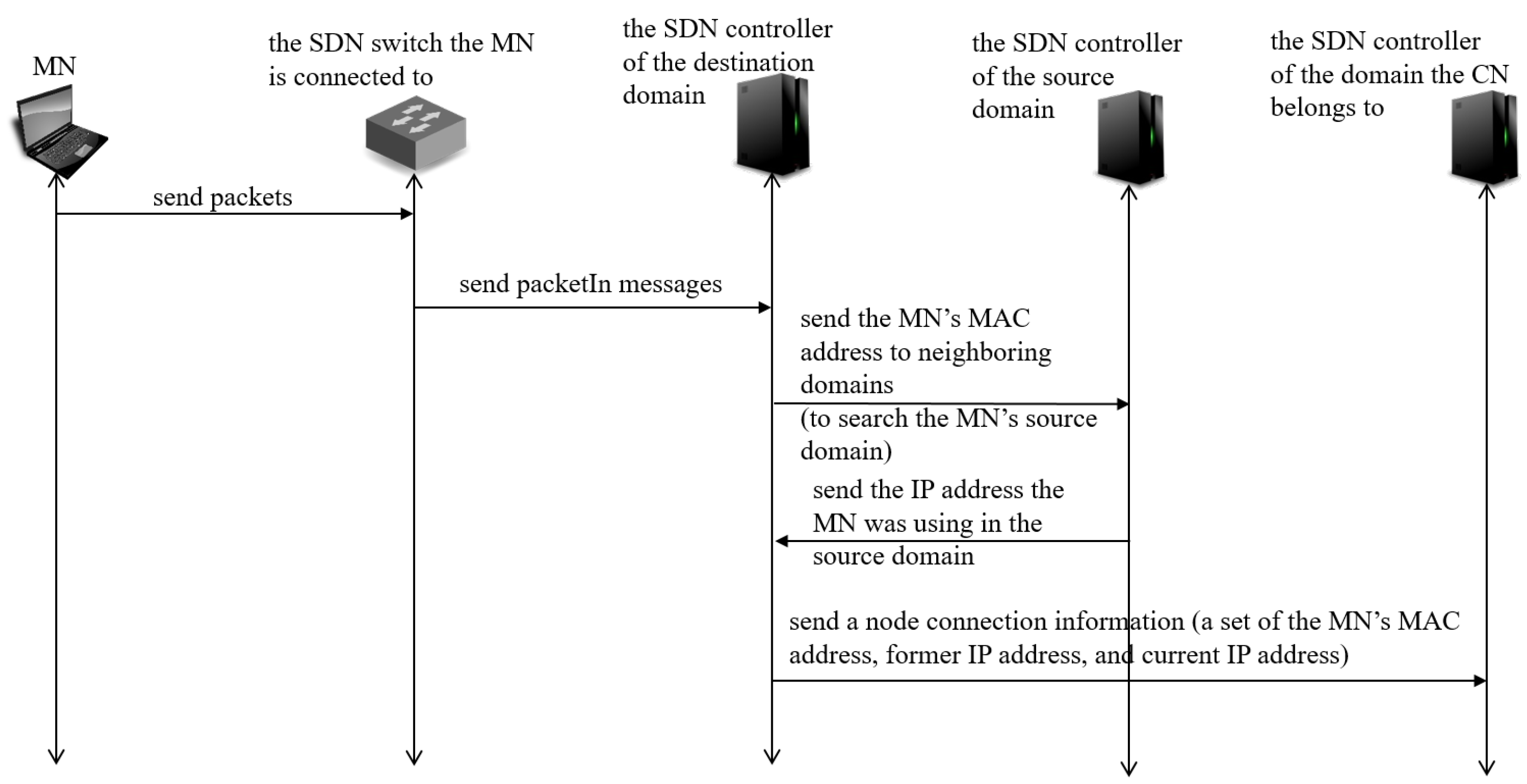
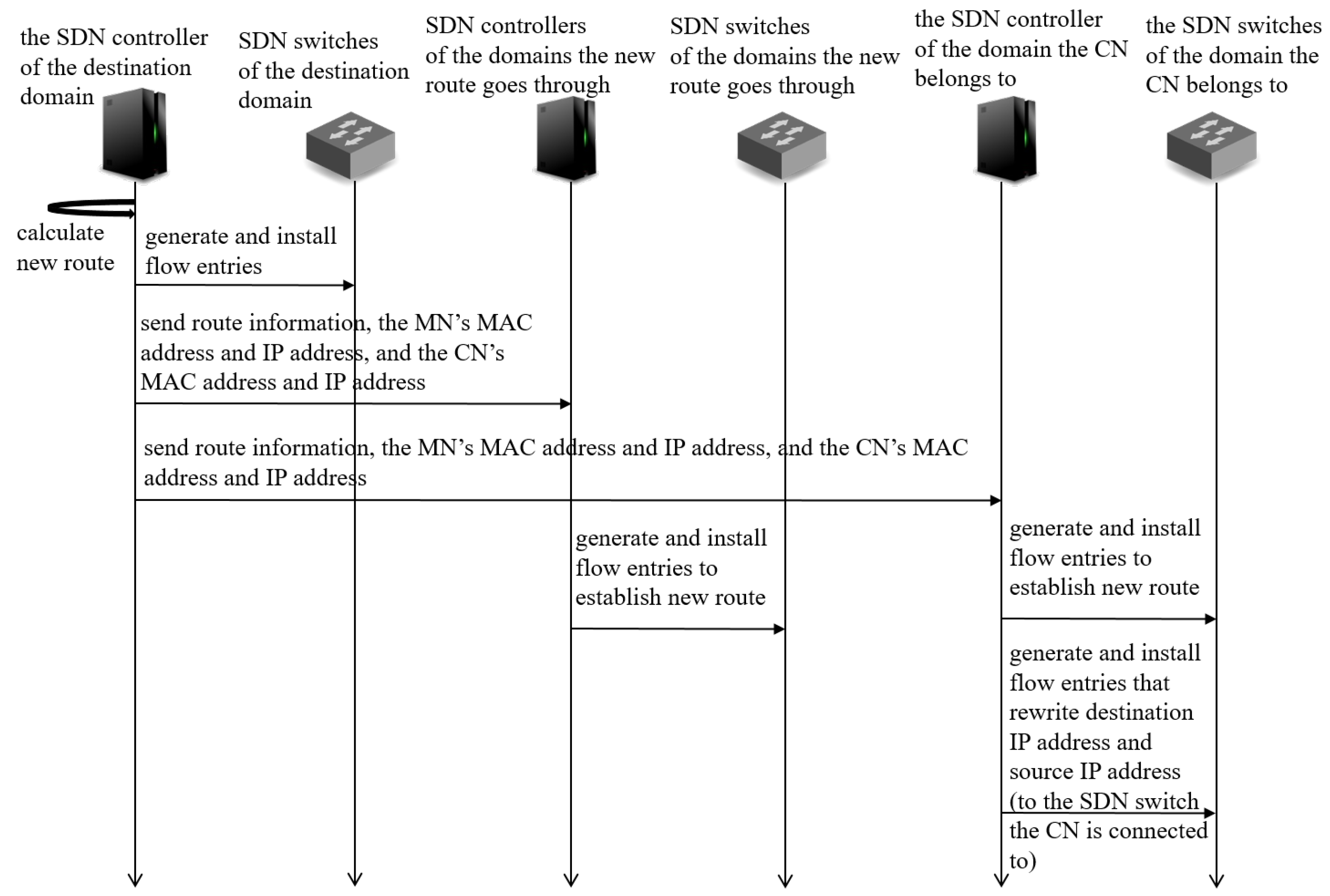

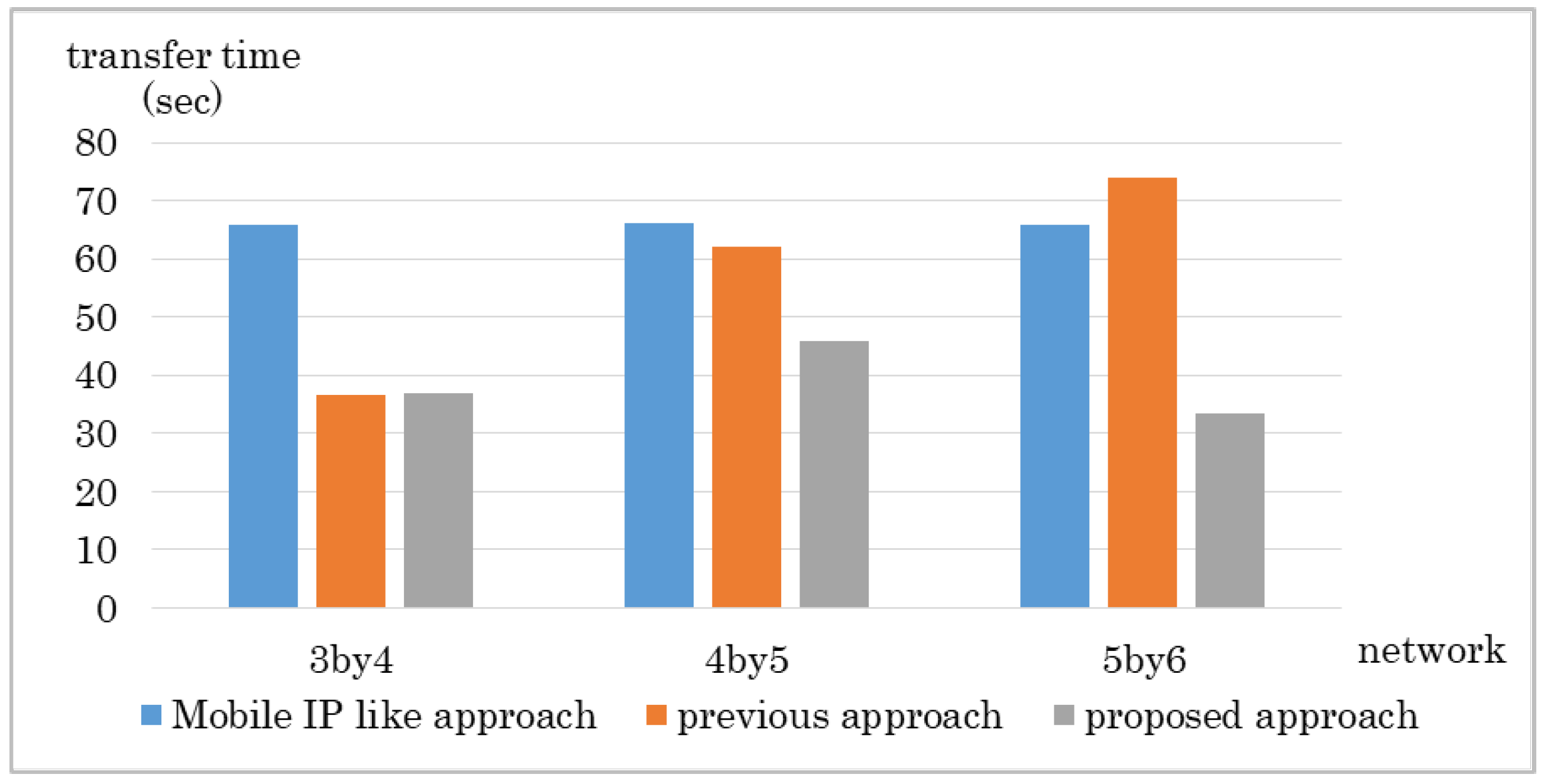
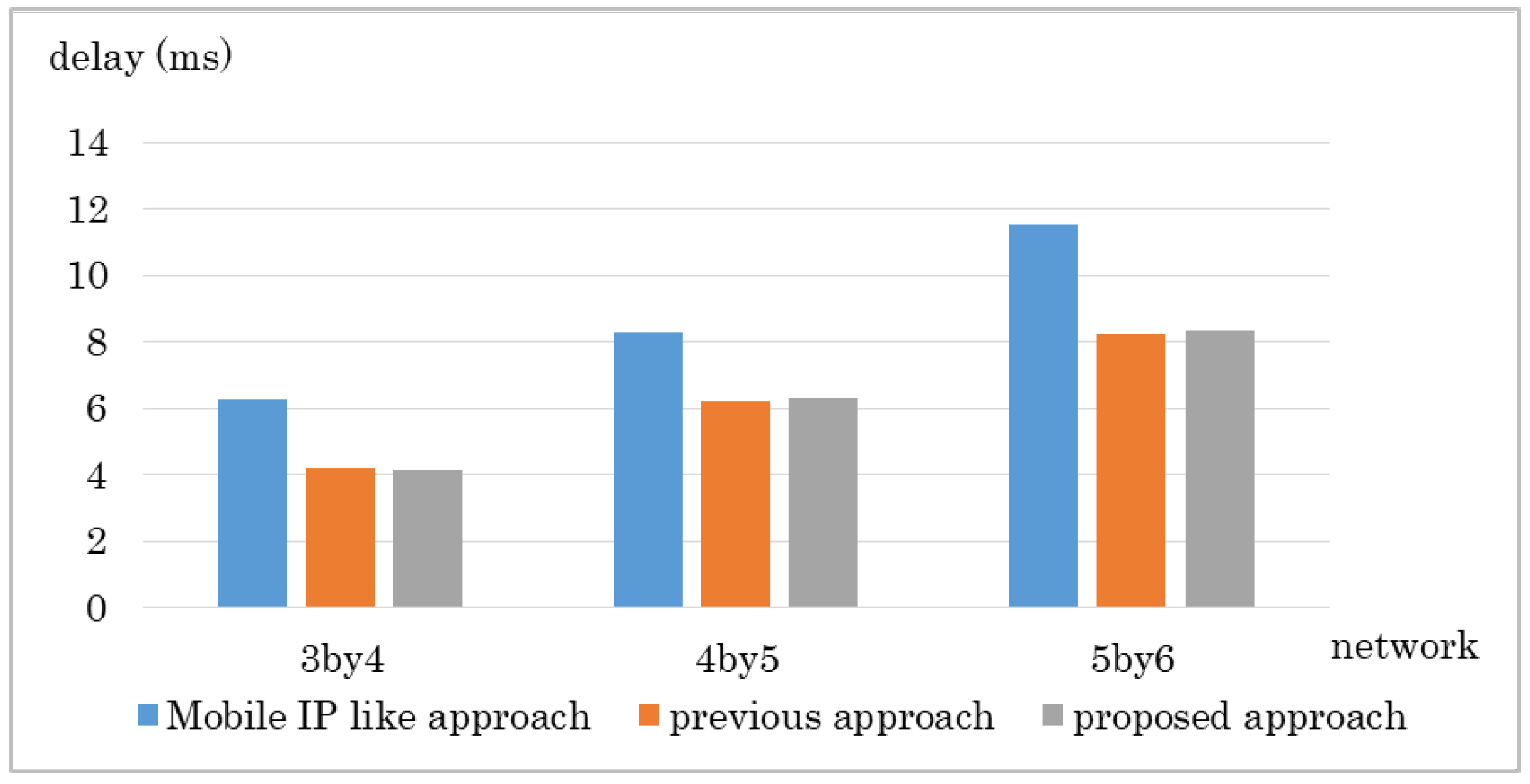
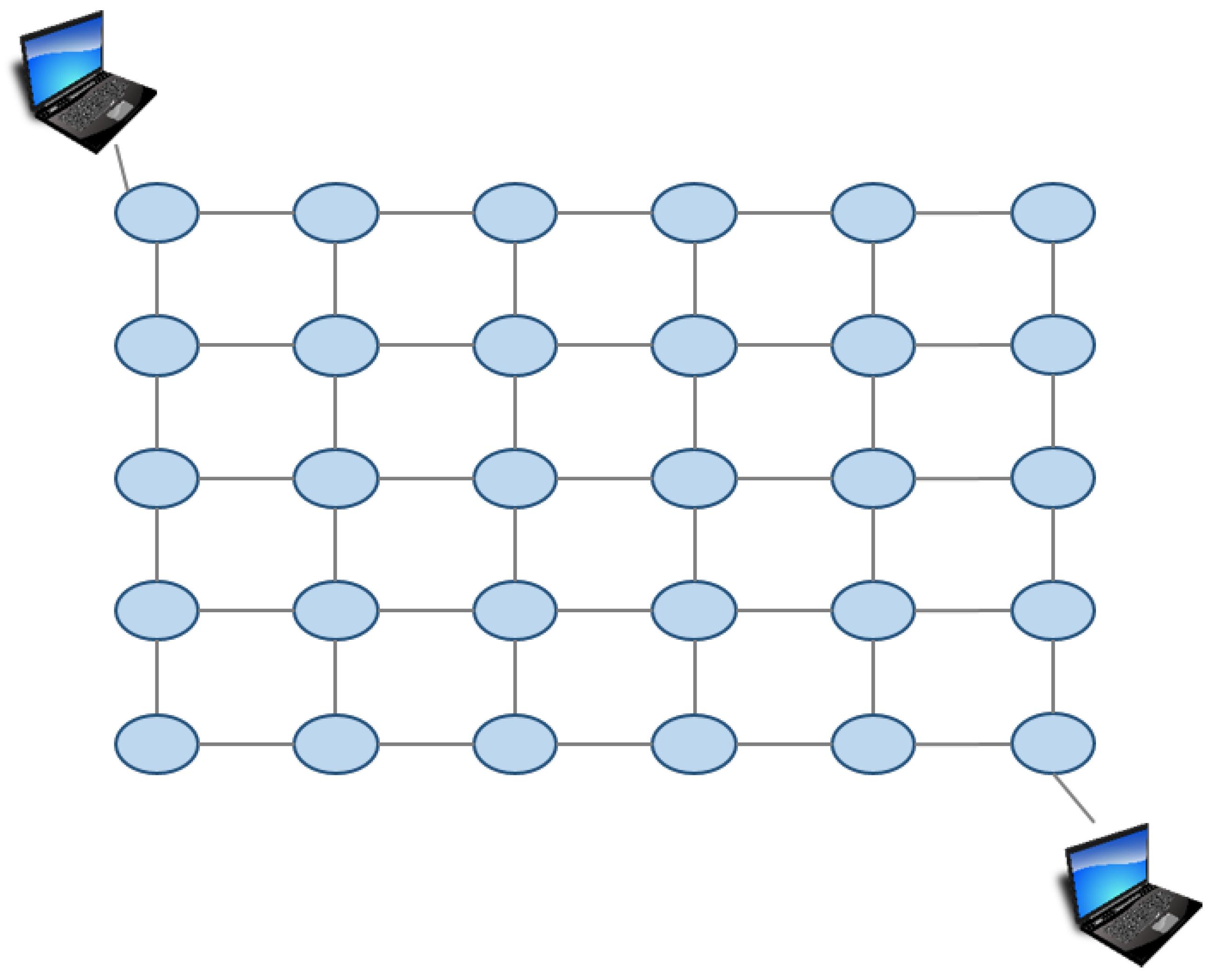
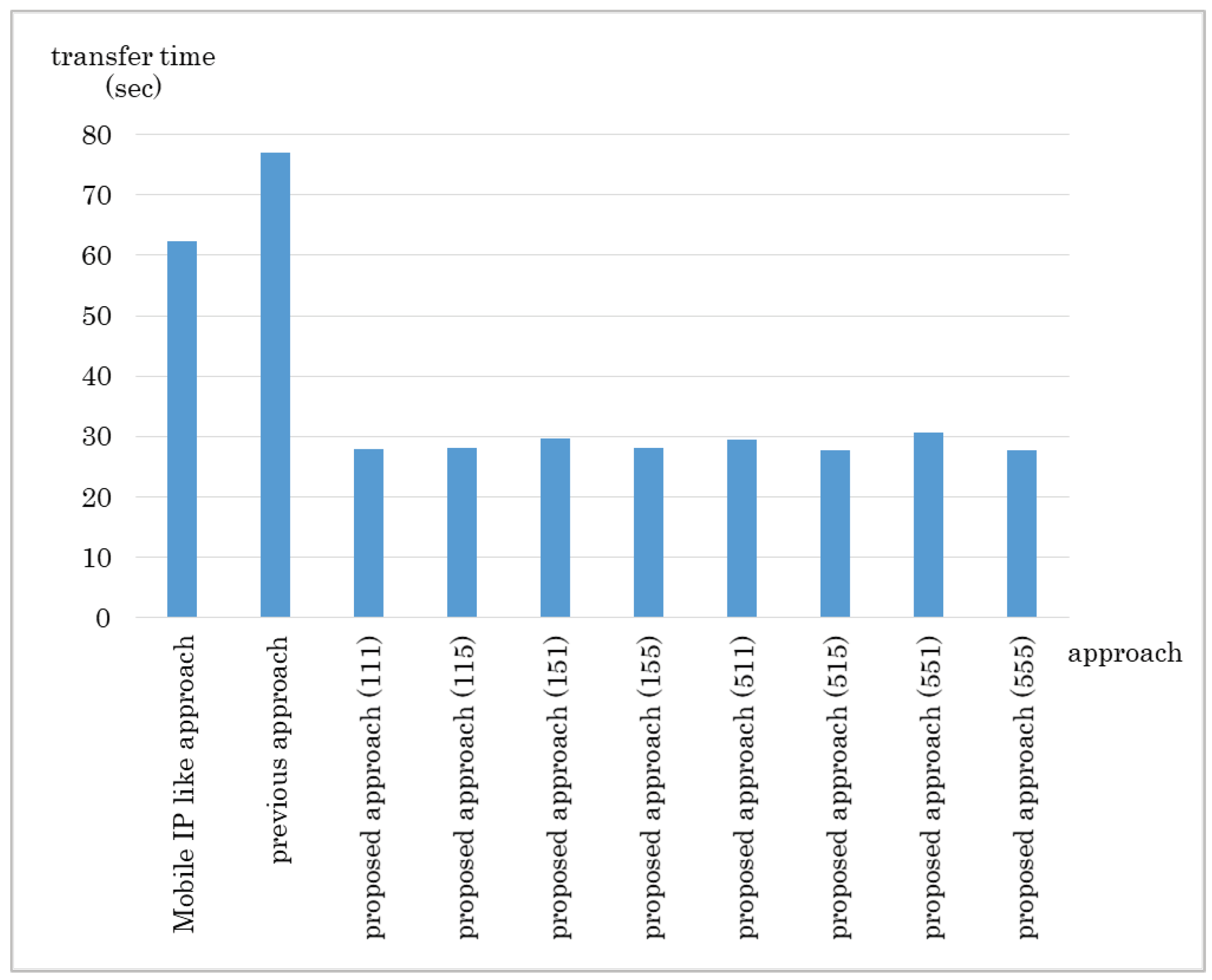
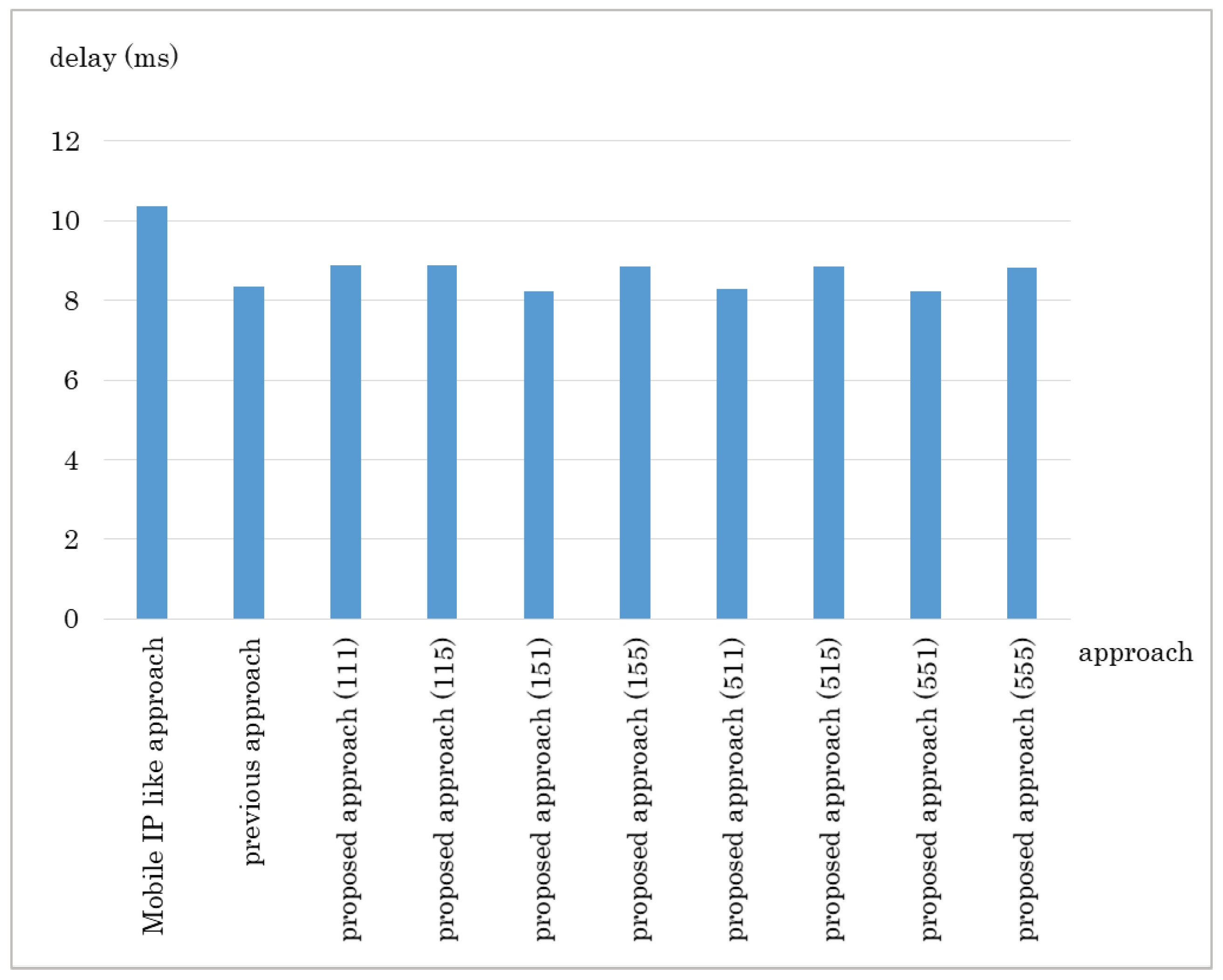
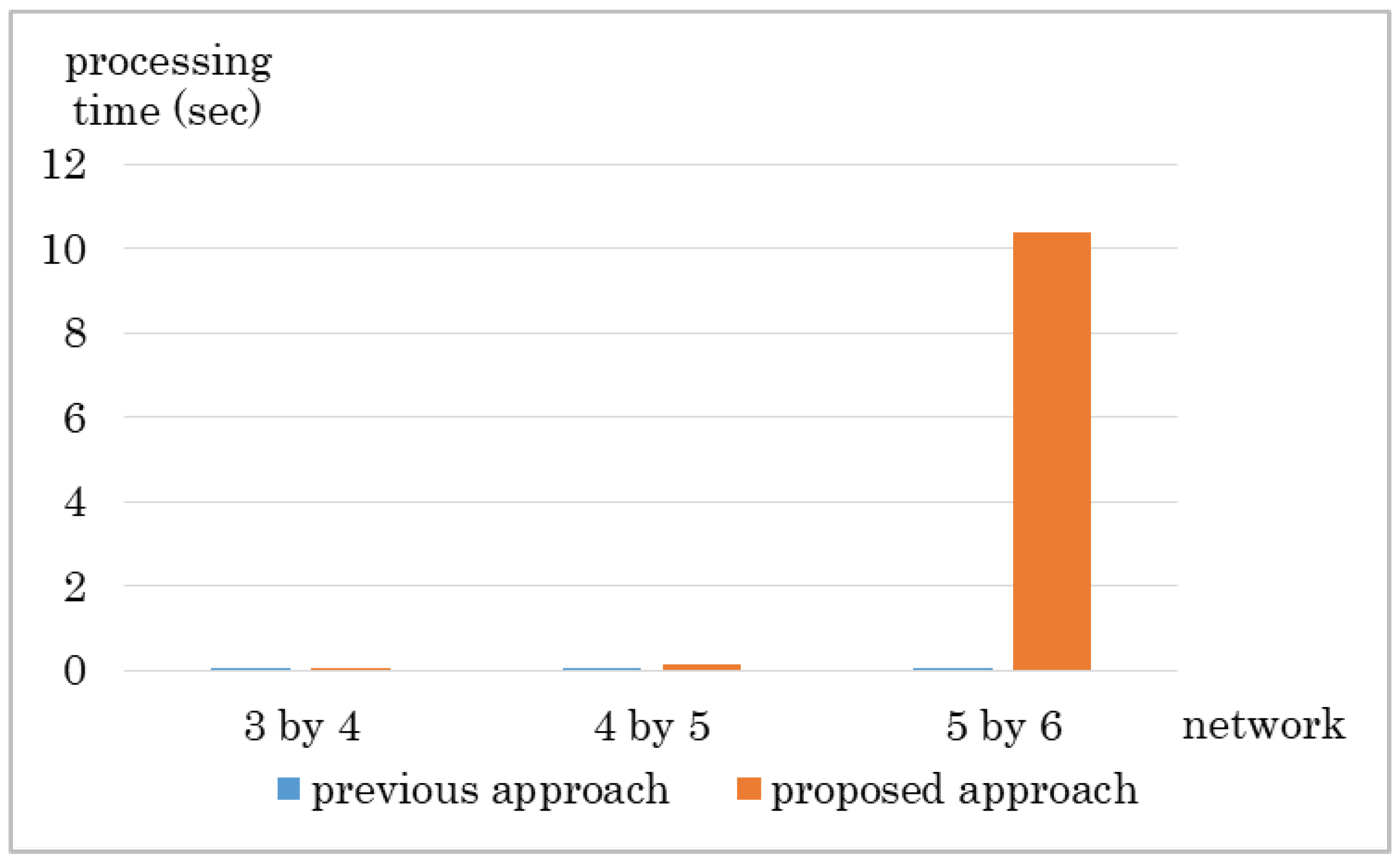
© 2018 by the authors. Licensee MDPI, Basel, Switzerland. This article is an open access article distributed under the terms and conditions of the Creative Commons Attribution (CC BY) license (http://creativecommons.org/licenses/by/4.0/).
Share and Cite
Hata, M.; Soylu, M.; Izumi, S.; Abe, T.; Suganuma, T. SDN Based End-to-End Inter-Domain Routing Mechanism for Mobility Management and Its Evaluation. Sensors 2018, 18, 4228. https://doi.org/10.3390/s18124228
Hata M, Soylu M, Izumi S, Abe T, Suganuma T. SDN Based End-to-End Inter-Domain Routing Mechanism for Mobility Management and Its Evaluation. Sensors. 2018; 18(12):4228. https://doi.org/10.3390/s18124228
Chicago/Turabian StyleHata, Misumi, Mustafa Soylu, Satoru Izumi, Toru Abe, and Takuo Suganuma. 2018. "SDN Based End-to-End Inter-Domain Routing Mechanism for Mobility Management and Its Evaluation" Sensors 18, no. 12: 4228. https://doi.org/10.3390/s18124228
APA StyleHata, M., Soylu, M., Izumi, S., Abe, T., & Suganuma, T. (2018). SDN Based End-to-End Inter-Domain Routing Mechanism for Mobility Management and Its Evaluation. Sensors, 18(12), 4228. https://doi.org/10.3390/s18124228




